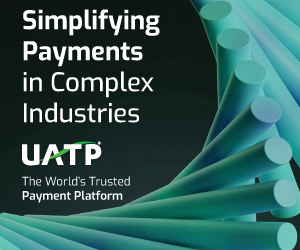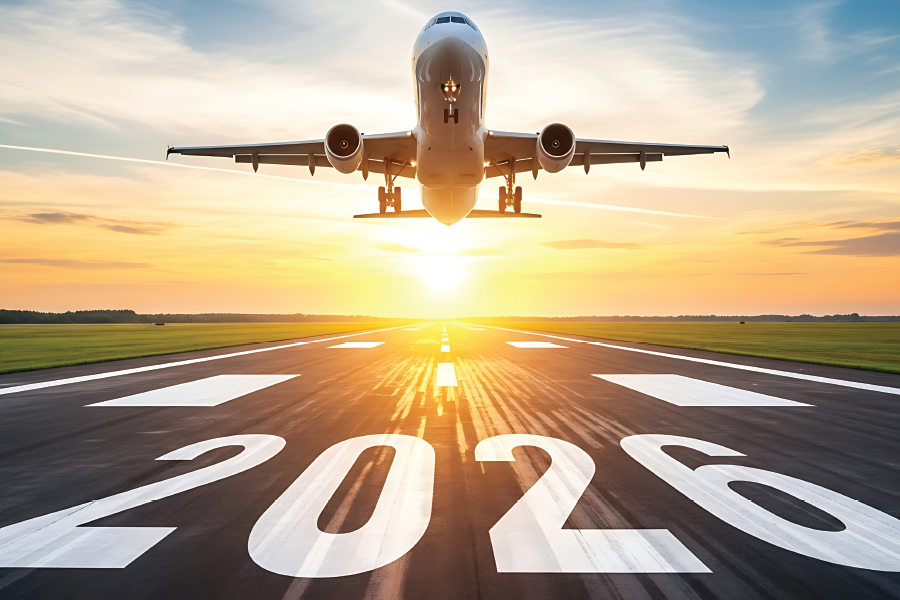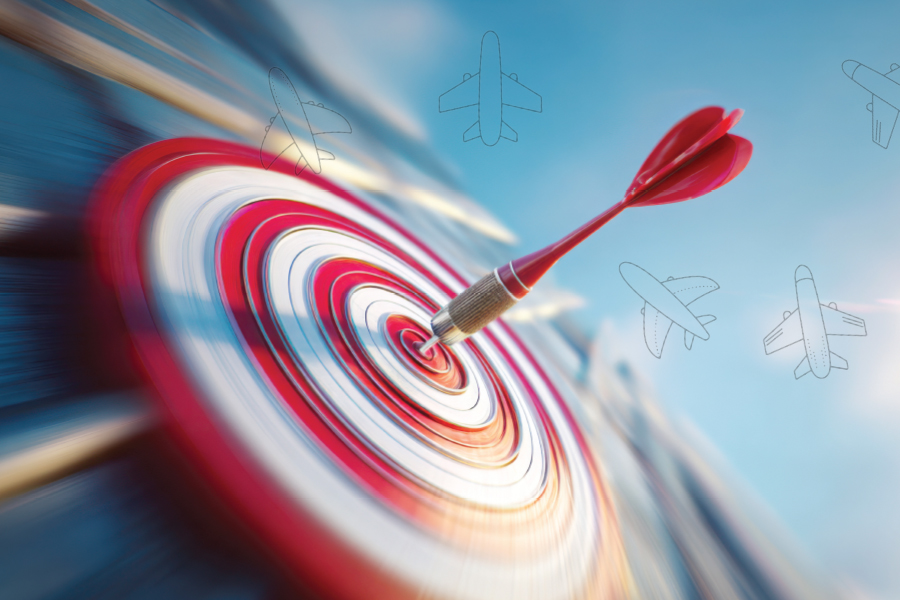It’s been a long time coming and still the jury is out on when NDC, GDSs and OBTs will work seamlessly together. IATA claimed that 2019 would be the year of NDC scale but a global pandemic stopped that. Nonetheless, some industry observers are bullish that 2024 will be a breakthrough year in some regions of the world.
NDC content is now more widely available; as much as 50 percent of the bookings that could be booked are able to be completed through NDC. Statistics from Airlines Reporting Corporation suggest that one in five tickets in the US for example, are NDC content, a rise from 7 percent in December 2022 to a significant 20 percent in December 2023.
A similarly positive picture is revealed by Amadeus, reporting that more than 53 countries have NDC adoption of at least 10 percent for at least one carrier. From a regional NDC perspective the company reckons the Americas region is leading the way, followed by EMEA and APAC.
“Over the last months, we are beginning to see increasing growth, with five times more NDC bookings compared to last year and this is set to continue into 2024,”,” says Jay Richmond, senior director, Global Solution Consulting, Amadeus. “Within the distribution mix for a few airlines, we are seeing that one out of three bookings are NDC.”
Good progress indeed. However, dig deeper and the cracks start to appear. Progress with NDC is different by TMC, OBT and GDS, and this is where the brakes are slammed on. Establishing APIs to each airline is challenging as each is different and at different stages of NDC readiness. Furthermore, when analyzing available NDC content, much is leisure-focused and seemingly all about cheap low-end yield fares. “It’s rare to get business fares in NDC,” says Clive Wratten, CEO at The Business Travel Association, which represents the business travel community and TMCs in the UK. “NDC is great for a leisure product but business users are multi-sector, multi-carrier users with complex itineraries.”
Certainly, specialist corporate fares such as marine and entertainment fares are not available through NDC and the IATA standard is proving challenging when servicing corporate clients for bookings requiring interlining, refunds and changes to itineraries. Some TMCs also point to challenges when the booking includes hotel and car rental.
“The holy trinity for buyers is transparency/comparability, policy compliance and serviceability. But if you cannot service the booking, buyers need to see improvements as it’s not working well at the moment,” explains Scott Davies, CEO of the Institute of Travel Management (ITM), which represents over 5,000 business travel buyers and suppliers across the UK and Ireland.
Moreover, only a fraction of airlines are NDC ready. There are some 800 commercial airlines globally and IATA members number around 300, of which only 20 percent have an NDC certification. “If those 20 percent form 80 percent of your program then that’s fine,” explains Florian Mueller, air practice lead at FCM Consulting. But if it doesn’t…
Regional Differences
The cost is huge for what is a fundamental re-architecture and not all airlines will be able to afford the investment. “It’ll be another ten years to go for the other non-NDC IATA airlines,” reckons Thane Jackson, SVP of Global Distribution Strategy at BCD Travel. BCD has 11 NDC airlines live.
Lufthansa and British Airways were ahead of the curve as early adopters in the pre-pandemic period and tackled the clunky NDC as it was then. They sorted out many teething problems and have since achieved a good level of maturity. As a non-standard standard, the problem today lies in different airlines adopting NDC in different ways and at different paces and from different commercial standpoints. Explains Kyle Moore, president and GM at Travelport-owned global OBT Deem: “Europe has mainly taken a surcharge approach, with the Americas looking at content differentiation.” He hopes that regions will start to standardize over the next few years.
Each region has its lead NDC airline and each is usually ready in its home market first. So in Europe, Air France/KLM Airlines stand closely behind Lufthansa and British Airways, followed by Finnair and LOT. In Asia, Singapore Airlines is ahead of the game and Garuda is catching up while in Australasia it’s Qantas. In the Middle East, Emirates and Qatar shine, and in the US, it’s United, American, Aeromexico and Air Canada. Delta has yet to show its hand and rumors abound that they will this autumn, having watched their counterparts iron out all the bugs. Southwest will also become NDC compliant during 2024.
BCD’s Jackson also warns: “The ability to shop, book and ticket is available in the API but readiness in the OBTs is another story. It’s very challenging for a global TMC operating in 40 to 60 countries and using three different OBTs as there is no OBT that will work well globally,” he says. Some global buyers are considering the use of best-in-class OBTs by region as a workaround; others are using third parties such as Travelfusion.
“Regionalized OBTs may provide localized solutions but managing multiple OBTs can be complex,” points out Tom Rigby, SVP commercial at Reed & Mackay, part of the Navan Group.
Adieu EDIFACT
Deem’s Moore highlights the hesitancy on the part of TMCs to release content to OBTs. “We are switching NDC on for many TMCs, but only in their test environments so that they can test and get their back-office systems ready. But they remain reluctant to move that into live traveler platforms. In some cases, they are only switching NDC on within the TMC systems and holding back at the OBT level. It is not ideal, as the traveler is losing out.”
Other technology issues prevail. Concur, for example has only just come on board with British Airways, so slowly the gaps are being filled in the travel eco system. Sabre is late to the party for European airlines while Amadeus and Travelport are further along in the process. Cytric Easy by Amadeus was NDC ready in 2021 and has the ability to book NDC-sourced content in 24 airlines.
Ultimately, the GDS will not disappear as it will be the main provider of NDC content. It is EDIFACT – the GDS technology – that will be phased out and replaced by NDC, and these two will work in tandem. Some argue that NDC will make the GDS more valuable as a content aggregator.
When this will materialize is anyone’s guess. David Chappell, chief product officer of TripStax, reckons disintermediation of the GDS will happen this year, so that we no longer rely on this channel as the primary source of travel data. “Any TMC who doesn’t do this will get caught by the tech tidal wave that is coming, i.e., One Order (IATA’s next initiative), which will be the real tipping point, and AI.” He adds: “The idea that any one GDS will hold all content is fallible.”
NDC is, after all, just another source of content. These issues are arguably yet another distribution challenge. And there is no dispute that the GDS – with its limitation to 26 airline fare classes – needed updating.
It’s a big ask to overturn 40 years of the GDS and patronize a new-fangled, untried technology, so no one should be surprised by the slow progress. Cautious optimism prevails in the marketplace that 2024 will see accelerated progress in the Americas triggered by American Airlines bold move last year when it pulled as much as 40 percent of its EDIFACT fares, restricting them to NDC platforms, and launched a direct-sell SME loyalty program. These moves have focused the minds of US buyers on NDC questions which heretofore had not gained much traction.
Tripbam’s Jason Kramer, VP Air Solutions, reports that US buyers are none too pleased with American and that “some have moved volume away from AA, upwards of 5 percent, the make-up of city pairs impacting how much they can shift share.” What’s likely in the US this year are some clunky roll-outs, reckons Kramer, followed by improvements in 2025.
Turning the Corner
Friction abounds in all regions of the world simply because NDC is less functional than the GDS. It means that no TMC can book everything in a single transaction in one place as neither the GDS or NDC is a single-content and/or servicing solution at this stage. “More importantly to the buyer community, in some cases contracted discounts vary by booking source so that ‘single’ transaction has many factors at play that impact the traveler and the business,” Kramer explains.
“For business travel, it is not just about booking, but also about the traveler service experience and comprehensive data collection,” according to Joel Bailey, chief technology officer, North America for Corporate Travel Management. “The complexities involved with getting the entire ecosystem of interconnected systems to be NDC-ready and for the airline to have enabled full end-to-end data and servicing capabilities with TMC and technology partners has slowed adoption,” he notes.
However, there is room for optimism. “The list of problems is getting shorter and in 2024 we have turned a corner and a lot of the tools needed now exist,” says Guy Snelgar, global business travel director of the Advantage Travel Partnership, an independent TMC group in the UK and the third largest TMC network in Europe.
But neither is Snelgar blinded by the challenges that lie ahead. “The challenges will remain for a long time as there are different booking flows, different rules, a different ticketing process,” he asserts. “NDC has had to evolve from nothing.”
TripStax’s Chappell reckons it will be five years until we have a simpler distribution landscape. Some TMCs reckon they are ahead of the curve in ironing out these technical hitches. For example, Reed & Mackay, says its proprietary technology means NDC content is available across both their online and offline platforms.
Meanwhile, CTM’s Bailey explains that the company has four regional product development hubs worldwide enabling it to pursue multiple connections locally in parallel across North America, Europe, Asia and Australia/New Zealand. This gives customers “faster access to new content rather than having to prioritise one large regional carrier over others in different regions,” he says.
It’s a Hybrid World – For Now
Regardless, it’s no surprise that buyers remain reticent and are sticking firmly with their traditional channels to maintain the right levels of duty of care and reporting standards. “Buyers are excited about a shopping experience that more closely parallels offers available on airline.com sites, but they are equally concerned about the ability to manage upsells from a policy perspective and they expect to now be able to factor that ancillary spend into their negotiation strategies,” says Bailey.
Upselling and direct sell are two remaining worries buyers have with adopting NDC, but the good news is that TMCs, OBTs and companies such as Tripbam can catch any upsell pre-trip by creating alerts for the travel manager. Arguably buyers should not be worried whether their TMC obtains content from NDC or GDS/EDIFACT. “It’s a hybrid world while all parties make compromises in the short term,” says Advantage’s Snelgar while Tripbam’s Kramer refers to it as a band-aid approach.
Furthermore, the pricing benefit of NDC has not materialized either. Spend optimization and analytics company Tripbam says that while in the aggregate, NDC fares are lower, that’s not true across all fare types. Tripbam has been capturing American Airlines’ published fares for GDS-EDIFACT and NDC since April 1 2023 and breaks them into two categories: restricted fares and unrestricted fares. Restricted fares are generally purchased with greater than 7-days advance purchase and non-refundable, whereas unrestricted fares are generally purchased with minimal advance purchase and refundable.
For example, Dallas-Fort Worth to Los Angeles (DFW-LAX), the average restricted and unrestricted NDC fare is $483 compared with an average GDS-EDIFACT fare of $643. As a whole, that’s a savings of 25 percent if booking NDC fares. However, when isolated to restricted fares only, the savings aren’t what they seem. On the same city pair, the average restricted fare via NDC is $340 compared to an average of $313 via GDS-EDIFACT. This comparison shows not all fares via NDC are going to be less expensive than GDS-EDIFACT fares and this scenario plays out similarly across almost the entire AA domestic network.
“NDC fares aren’t always lower, particularly non-refundable restricted fares, and the fare savings via NDC channels are not always as marketed by many in the industry,” Kramer asserts. When most managed travel programs are weighted toward restricted-type fares when traveling domestic-US on AA and other carriers, the advantage of NDC fares doesn’t always materialize in the current environment.
It’s clear NDC still has a long way to go on several fronts but is going in the right direction, “with real progress now visible,” says Julian Russell, executive director information technology and supplier relations at GlobalStar.
FCM’s Mueller is more bullish: “By end 2024 we’ll see a different market.”
Image: Created with Shutterstock AI











